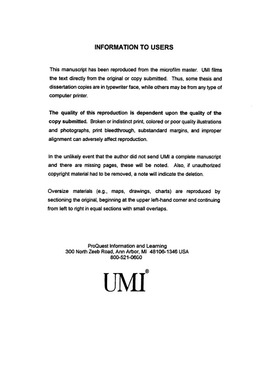| dc.contributor.advisor | Cifelli, Richard L., | en_US |
| dc.contributor.author | Gordon, Cynthia Leigh. | en_US |
| dc.date.accessioned | 2013-08-16T12:18:57Z | |
| dc.date.available | 2013-08-16T12:18:57Z | |
| dc.date.issued | 2003 | en_US |
| dc.identifier.uri | https://hdl.handle.net/11244/596 | |
| dc.description.abstract | Principal components analysis of tooth morphology and diet in modern mammals indicates that gross morphological differences in tooth shape can be detected within groups, as well as among groups. Tooth morphology separated species into groups along phylogenetic lines, with marsupials separated from primates and insectivores. Differences between species were more difficult to distinguish in Late Cretaceous taxa. Nonetheless, the position of some species did indicate they had a more specialized tooth shape. The Cretaceous marsupial Glasbius grouped near modern Caluromys , indicating that teeth of Glasbius were becoming more specialized for a frugivorous diet. The large range of body size seen in some latest Cretaceous mammals, coupled with evidence that some were trending towards more specialized teeth, may indicate that Cretaceous mammals started radiating into different ecological niches before the extinction of the dinosaurs. | en_US |
| dc.description.abstract | At the beginning of the Tertiary, there was an explosive mammalian radiation, with mammals hypothetically filling the ecological voids left by the demise of the dinosaurs at the end of the Cretaceous. Traditionally, Cretaceous mammals were considered ecological generalists, small insectivores living in the shadow of the dinosaurs, but there has not yet been a comprehensive study of the ecology of Cretaceous mammals before this extinction event. Body size and diet in Late Cretaceous (Lancian) therian mammals, marsupials and placentals, were examined in an attempt to understand better the roles Cretaceous mammals played in their environment. | en_US |
| dc.description.abstract | Least squares regression analysis was used to examine the relationship between various dental and cranial measurements in modern, dentally conservative primates, marsupials and insectivores in order to generate equations to predict body size (as measured by body mass) in Cretaceous mammals. Lower and upper first molars are the most highly correlated with body size. Regression equations generated from the first molars were used to predict body size in Cretaceous mammals. The range of body size in most Cretaceous mammals is within that of modern mammals, with most species being less than 200 g in size. Latest Cretaceous marsupials had a larger range of body sizes, with five Lancian species over 200 g, compared to only two species of placentals. | en_US |
| dc.format.extent | xiv, 177 leaves : | en_US |
| dc.subject | Paleontology Cretaceous. | en_US |
| dc.subject | Animals Food. | en_US |
| dc.subject | Mammals Morphology. | en_US |
| dc.subject | Mammals, Fossil. | en_US |
| dc.subject | Paleontology. | en_US |
| dc.title | Functional morphology and diet of Late Cretaceous mammals of North America. | en_US |
| dc.type | Thesis | en_US |
| dc.thesis.degree | Ph.D. | en_US |
| dc.thesis.degreeDiscipline | Department of Biology | en_US |
| dc.note | Source: Dissertation Abstracts International, Volume: 64-03, Section: B, page: 1146. | en_US |
| dc.note | Adviser: Richard L. Cifelli. | en_US |
| ou.identifier | (UMI)AAI3082953 | en_US |
| ou.group | College of Arts and Sciences::Department of Biology | |
